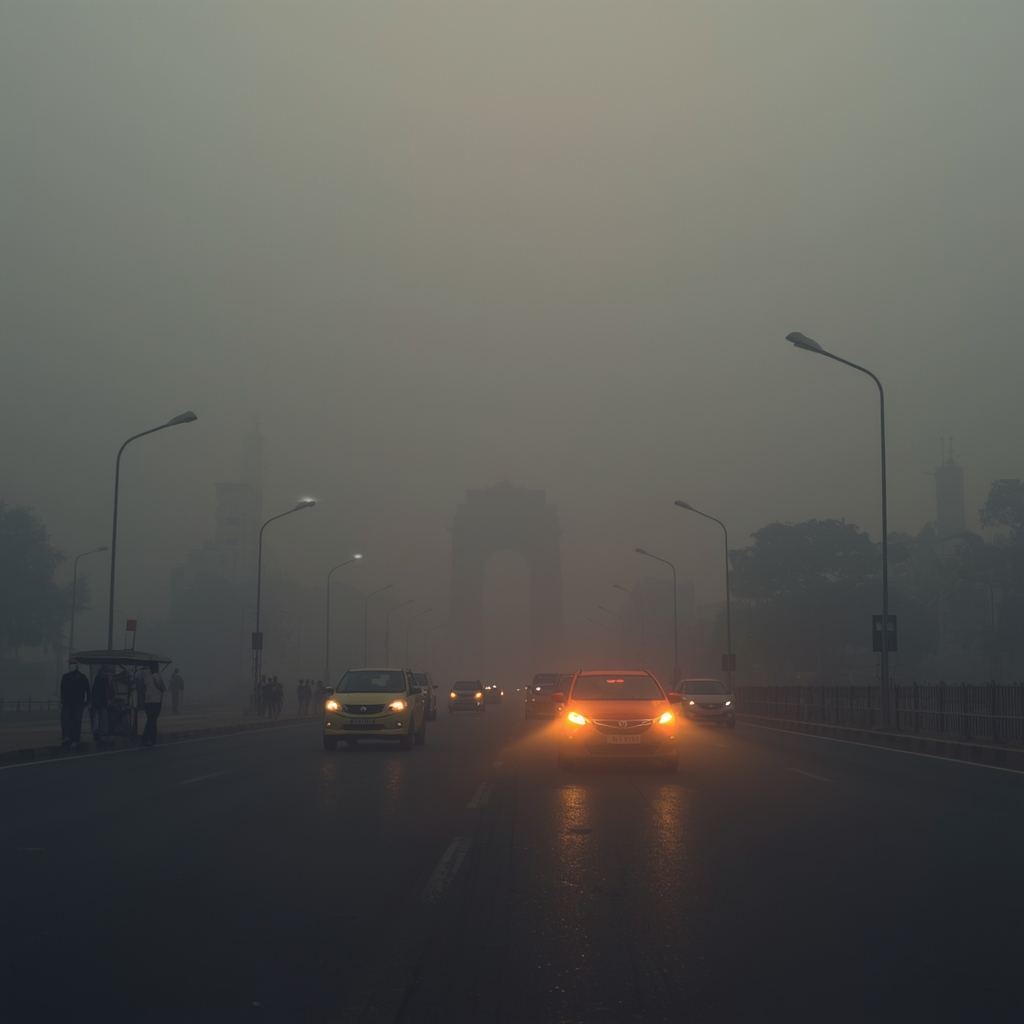NEW DELHI-20/10/2025 –Toxic Smog Mars Diwali Celebrations Across India
As India marked Diwali with lights and fireworks, major cities across the country woke up to choking smog and dangerously high air pollution levels. The Air Quality Index (AQI) in many regions slipped into the “very poor” and “severe” categories on Monday morning, sparking fresh health concerns and government action.
Delhi’s Air Turns Hazardous
In the national capital, the AQI hovered near 350 during the morning, with several monitoring stations such as Anand Vihar, Wazirpur, and Jahangirpuri recording readings above 400. The dense haze settled over the city after a night of fireworks, trapping pollutants close to the ground due to low wind speeds. Authorities responded by enforcing Stage II of the Graded Response Action Plan (GRAP), which restricts heavy vehicles, halts non-essential construction, and increases roadside dust control efforts.

The pollution crisis extended beyond Delhi to the surrounding NCR region. Noida recorded an AQI of around 330, while Ghaziabad and Gurugram followed closely behind. In Punjab and Haryana, the dual impact of fireworks and widespread stubble burning deepened the smog. Several towns in these states crossed the 400-mark on the AQI scale, pushing air quality into hazardous territory. Uttar Pradesh cities like Lucknow and Kanpur were also enveloped in thick pollution, with readings exceeding 300 by mid-morning.
Cities across the Indo-Gangetic plain suffered the most, as calm winds and cool weather trapped smoke near the surface. As visibility dropped, train and flight operations in some areas experienced minor disruptions. Environmental experts warned that conditions could deteriorate further in the coming days without a shift in weather patterns or aggressive mitigation steps.
Air Quality Across Major Metros
Southern and western cities fared comparatively better. Mumbai’s AQI averaged around 190, placing it in the “unhealthy” range but still below northern levels. Chennai and Hyderabad recorded moderate readings near 100, while Bengaluru’s index remained below 80, considered “satisfactory.” The contrast highlights how local geography and post-monsoon weather heavily influence pollution buildup.
Medical professionals have cautioned that the persistently toxic air can cause severe respiratory and cardiac complications. Hospitals in the capital have begun reporting an increase in asthma attacks, persistent coughing, and eye irritation cases. Health authorities advised residents, especially children, the elderly, and those with pre-existing conditions, to limit outdoor exposure, use N95 masks, and operate air purifiers indoors.
Call for Collective Action
Despite campaigns promoting green crackers and public awareness drives, the annual Diwali smog has again revealed the limits of voluntary compliance. Experts argue that long-term solutions require stricter enforcement of curbs on emissions, sustainable farming practices to eliminate stubble burning, and stronger regional coordination.
As diyas continue to flicker across homes, the dense haze above stands as a reminder that India’s festival of light remains shadowed by an urgent environmental challenge—where the glow of celebration comes at the cost of the very air its people breathe.











Leave a comment